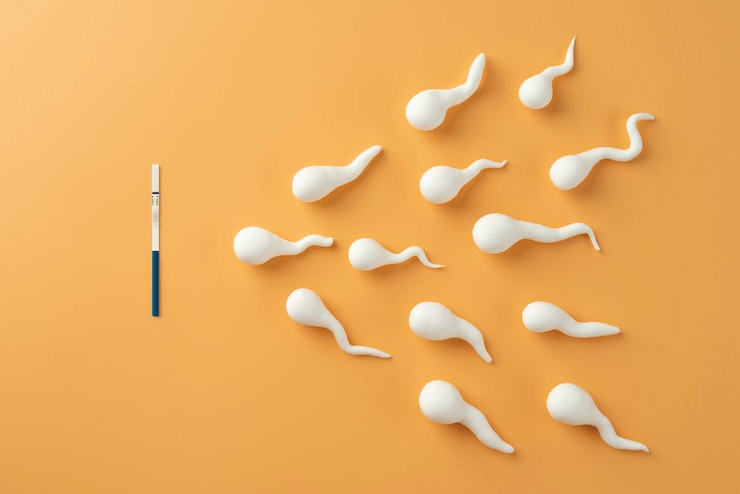
Gene therapy for azoospermia treatment
Introduction Male infertility, especially caused by azoospermia, affects millions of men worldwide. For those suffering from non-obstructive azoospermia, treatment options have been limited. However, thanks

Zero sperm confirmation after vasectomy is the most critical part of the post-surgery process. Even though a vasectomy is a reliable and permanent form of male contraception, it does not offer immediate sterility. Residual sperm can remain in the reproductive system for weeks or even months following the procedure. That’s why confirming the absence of sperm in semen is vital before relying on the vasectomy as a birth control method.
This guide breaks down everything you need to know about confirming zero sperm after vasectomy, including timing, semen testing, what results to expect, and what actions to take based on your test results.
A vasectomy is a minor surgical procedure that permanently prevents sperm from entering the semen. The process involves cutting, sealing, or blocking the vas deferens — the tubes that carry sperm from the testicles. Once these tubes are blocked, sperm can no longer mix with the semen that is ejaculated.
Although the production of sperm continues in the testicles, they are reabsorbed by the body because they have nowhere to go. The man can still ejaculate normally, but the semen will no longer contain any sperm, once zero sperm confirmation after vasectomy is achieved.
After a vasectomy, it takes time for any remaining sperm to be cleared out of the reproductive system. Sperm can stay in the vas deferens and seminal vesicles even after the tubes are cut. This is why patients are advised not to assume they’re sterile immediately after surgery.
Residual sperm: Sperm may still be present in the system for several weeks.
Risk of pregnancy: Without confirmation, relying on the vasectomy too soon can lead to unintended pregnancies.
Rare failure: Though rare, the vas deferens can sometimes spontaneously reconnect, a condition called recanalization.
Only a lab-tested semen analysis can confirm that the semen is completely free of sperm, meaning the procedure was successful.
Doctors typically recommend waiting 8 to 12 weeks, or after at least 15 to 20 ejaculations, before the first sperm test. This gives the body time to naturally clear out any remaining sperm.
Weeks 8–12: First sperm test (semen analysis)
If sperm are present: Wait another 4–6 weeks and retest
Repeat until: Zero sperm (azoospermia) is confirmed
Until you get a confirmed zero sperm result, continue using backup contraception to prevent pregnancy.
The medical term for “zero sperm” is azoospermia — a condition in which no sperm cells are found in a semen sample. This is the goal after a vasectomy. Only after azoospermia is confirmed can the patient be considered sterile.
In some cases, the test may reveal a few non-motile sperm (dead or immobile). While this might still be acceptable depending on your clinic’s policy, many providers will request one more test to ensure complete sterility.
The test used to confirm zero sperm after vasectomy is a semen analysis — a lab test to evaluate the presence and quality of sperm in semen.
Sample collection: You’ll be asked to provide a semen sample through masturbation into a sterile container.
Transport: The sample must be delivered to the lab within 1–2 hours after collection.
Microscopic examination: Lab technicians will analyze the semen for any presence of sperm — both motile (moving) and non-motile (non-moving).
Some clinics offer home sperm test kits, but these may not detect all sperm types. Lab testing remains the gold standard for accurate and reliable results.
It’s not uncommon for men to still have sperm in their semen 2–3 months after the vasectomy. This doesn’t necessarily indicate a failed procedure. Often, it means that more time or additional ejaculations are needed to clear the remaining sperm.
Motile sperm detected: May suggest the vas deferens has reconnected (rare), and further evaluation is required.
Non-motile sperm present: Often harmless but may require another semen test depending on clinic guidelines.
Persistent sperm after 6 months: Could signal vasectomy failure and may require repeat surgery.
In any of these situations, your doctor will guide you through the next steps.
There is no guaranteed way to speed up sperm clearance after a vasectomy, but several strategies can help move the process along:
Frequent ejaculation: Ejaculating 2–4 times per week can help clear the remaining sperm faster.
Stay active: Physical activity may support faster recovery and clearance.
Avoid smoking: Smoking can impair the healing process and sperm clearance.
Follow post-op care instructions: Proper healing ensures no complications that might slow down sperm clearance.
Once a semen sample shows azoospermia (no sperm present), the vasectomy is considered successful. You are officially sterile, and no further contraceptive measures are necessary.
Most clinics will provide you with a written confirmation of your test results, which is important to keep for future reference.
No need for backup contraception
Peace of mind for both partners
Assurance that the vasectomy achieved its intended result
Some healthcare providers consider a single negative semen analysis (showing no sperm) as sufficient if it’s conducted 12+ weeks after the vasectomy. However, others recommend two consecutive samples with azoospermia to confirm permanent sterility.
Be sure to follow your healthcare provider’s specific instructions. Don’t assume sterility unless you receive written confirmation from your doctor.
Skipping the semen analysis is strongly discouraged. Many unintended pregnancies have occurred because patients assumed the procedure worked without verification.
Unintended pregnancy
False confidence
Medical liability
Emotional and financial consequences
Your vasectomy isn’t “done” until you receive a confirmed zero sperm result from a lab test.
Semen analysis is highly accurate when done in a certified lab. It can detect even trace amounts of sperm, both motile and non-motile. While at-home kits are available, they often have limited sensitivity and may only detect motile sperm.
To ensure complete peace of mind and medical accuracy, always choose professional lab testing.
The cost of a semen analysis post-vasectomy can vary depending on your location, healthcare provider, and insurance coverage. On average:
Lab-based test: $50–$200
Home test kits: $25–$100 (less accurate)
Some vasectomy packages include the semen test fee, while others charge separately. Check with your provider in advance. Zero Sperm Confirmation After Vasectomy
Besides the medical confirmation, zero sperm results can bring psychological comfort to many men. After weeks of waiting, the results often provide:
Relief from anxiety
Greater confidence in sexual intimacy
A sense of completion
Many couples feel a renewed sense of freedom after finally ditching condoms or birth control pills.
Before relying on your vasectomy as a sole form of birth control, make sure you’ve:
✔️ Waited at least 8–12 weeks
✔️ Ejaculated 15–20 times
✔️ Completed at least one semen analysis
✔️ Received confirmation of azoospermia
✔️ Got a written report from your doctor
If all steps are complete, you can feel confident knowing your vasectomy was successful.
A vasectomy is one of the most reliable forms of permanent birth control for men, but it’s not considered complete until zero sperm confirmation after vasectomy is verified by a professional semen analysis.
Taking the time to complete this final step ensures effectiveness, prevents surprises, and provides peace of mind. While the wait can be frustrating, it’s a short delay compared to a lifetime of worry-free intimacy.
Don’t skip the test. Don’t assume you’re in the clear. Confirm it — then enjoy the benefits of a safe, permanent, and effective birth control solution.

Introduction Male infertility, especially caused by azoospermia, affects millions of men worldwide. For those suffering from non-obstructive azoospermia, treatment options have been limited. However, thanks

Azoospermia is one of the most challenging causes of male infertility, often leaving men with few options and couples struggling to conceive. But today, an
PROLISTEM® is a Patented Formula
Copyright © 2025 Prolistem®